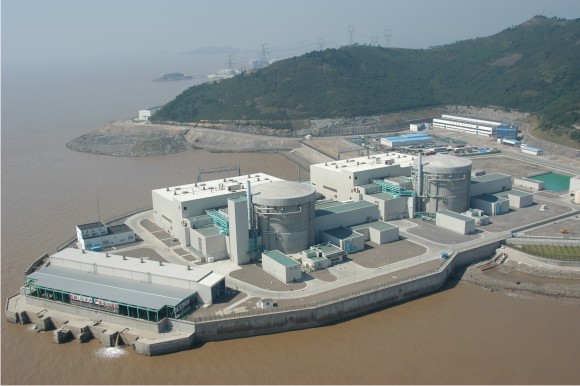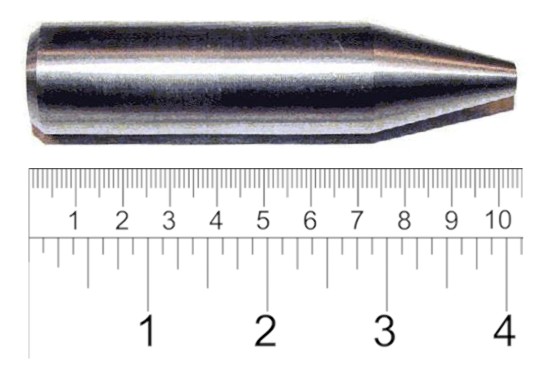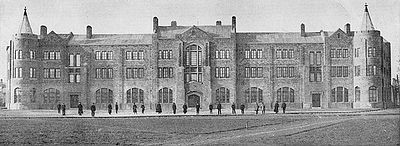|
Nuclear Energy In China
According to the National Nuclear Safety Administration of China, as of 2024 Dec 31, there are 58 nuclear power-plants operating in mainland China, second only to the US which has 94. The installed power sits at 60.88 GW, ranked third after US' 96.95 GW and France's 63.02 GW, and is projected to overtake France in 2025. There are 27 additional plants under-construction with a total installed power of 32.31 GW, ranked first for the 18th consecutive year. According to the National Bureau of Statistics, in 2024, nuclear power in China has a total installed power of 60.83 GW comprising 1.82% of the nation's total. They produced 450.85 TWh of electricity (ranked second globally), which is 4.47% of the nation's total. Nuclear power has been looked into as an alternative to coal due to increasing concerns about air quality, climate change and fossil fuel shortages. The China General Nuclear Power Group has articulated the goal of 200 GW by 2035, produced by 150 additional reactor ... [...More Info...] [...Related Items...] OR: [Wikipedia] [Google] [Baidu] |
Nuclear Fission
Nuclear fission is a reaction in which the nucleus of an atom splits into two or more smaller nuclei. The fission process often produces gamma photons, and releases a very large amount of energy even by the energetic standards of radioactive decay. Nuclear fission was discovered by chemists Otto Hahn and Fritz Strassmann and physicists Lise Meitner and Otto Robert Frisch. Hahn and Strassmann proved that a fission reaction had taken place on 19 December 1938, and Meitner and her nephew Frisch explained it theoretically in January 1939. Frisch named the process "fission" by analogy with biological fission of living cells. In their second publication on nuclear fission in February 1939, Hahn and Strassmann predicted the existence and liberation of additional neutrons during the fission process, opening up the possibility of a nuclear chain reaction. For heavy nuclides, it is an exothermic reaction which can release large amounts of energy both as electromagnetic radiat ... [...More Info...] [...Related Items...] OR: [Wikipedia] [Google] [Baidu] |
Cultural Revolution
The Cultural Revolution, formally known as the Great Proletarian Cultural Revolution, was a Social movement, sociopolitical movement in the China, People's Republic of China (PRC). It was launched by Mao Zedong in 1966 and lasted until his death in 1976. Its stated goal was to preserve Ideology of the Chinese Communist Party, Chinese socialism by purging remnants of Capitalism, capitalist and Four Olds, traditional elements from Chinese culture, Chinese society. In May 1966, with the help of the Cultural Revolution Group, Mao launched the Revolution and said that Bourgeoisie, bourgeois elements had infiltrated the government and society with the aim of restoring capitalism. Mao called on young people to Bombard the Headquarters, bombard the headquarters, and proclaimed that "to rebel is justified". Mass upheaval began in Beijing with Red August in 1966. Many young people, mainly students, responded by forming Cadre system of the Chinese Communist Party, cadres of Red Guards th ... [...More Info...] [...Related Items...] OR: [Wikipedia] [Google] [Baidu] |
CANDU At Qinshan
The CANDU (CANada Deuterium Uranium) is a Canadian pressurized heavy-water reactor design used to generate electric power. The acronym refers to its deuterium oxide (heavy water) moderator and its use of (originally, natural) uranium fuel. CANDU reactors were first developed in the late 1950s and 1960s by a partnership between Atomic Energy of Canada Limited (AECL), the Hydro-Electric Power Commission of Ontario, Canadian General Electric, and other companies. There have been two major types of CANDU reactors, the original design of around 500 MWe that was intended to be used in multi-reactor installations in large plants, and the optimized CANDU 6 in the 600 MWe class that is designed to be used in single stand-alone units or in small multi-unit plants. CANDU 6 units were built in Quebec and New Brunswick, as well as Pakistan, Argentina, South Korea, Romania, and China. A single example of a non-CANDU 6 design was sold to India. The multi-unit design was used only ... [...More Info...] [...Related Items...] OR: [Wikipedia] [Google] [Baidu] |
Thorium
Thorium is a chemical element; it has symbol Th and atomic number 90. Thorium is a weakly radioactive light silver metal which tarnishes olive grey when it is exposed to air, forming thorium dioxide; it is moderately soft, malleable, and has a high melting point. Thorium is an electropositive actinide whose chemistry is dominated by the +4 oxidation state; it is quite reactive and can ignite in air when finely divided. All known thorium isotopes are unstable. The most stable isotope, 232Th, has a half-life of 14.05 billion years, or about the age of the universe; it decays very slowly via alpha decay, starting a decay chain named the thorium series that ends at stable 208 Pb. On Earth, thorium and uranium are the only elements with no stable or nearly-stable isotopes that still occur naturally in large quantities as primordial elements. Thorium is estimated to be over three times as abundant as uranium in the Earth's crust, and is chiefly refined from monazite sa ... [...More Info...] [...Related Items...] OR: [Wikipedia] [Google] [Baidu] |
Uranium
Uranium is a chemical element; it has chemical symbol, symbol U and atomic number 92. It is a silvery-grey metal in the actinide series of the periodic table. A uranium atom has 92 protons and 92 electrons, of which 6 are valence electrons. Uranium radioactive decay, radioactively decays, usually by emitting an alpha particle. The half-life of this decay varies between 159,200 and 4.5 billion years for different isotopes of uranium, isotopes, making them useful for dating the age of the Earth. The most common isotopes in natural uranium are uranium-238 (which has 146 neutrons and accounts for over 99% of uranium on Earth) and uranium-235 (which has 143 neutrons). Uranium has the highest atomic weight of the primordial nuclide, primordially occurring elements. Its density is about 70% higher than that of lead and slightly lower than that of gold or tungsten. It occurs naturally in low concentrations of a few Parts-per notation#Parts-per expressions, parts per million in soil, ... [...More Info...] [...Related Items...] OR: [Wikipedia] [Google] [Baidu] |
Central Committee Of The Chinese Communist Party
The Central Committee of the Chinese Communist Party, officially the Central Committee of the Communist Party of China, is the Central committee, highest organ when the National Congress of the Chinese Communist Party, national congress is not in session and is tasked with carrying out congress resolutions, directing all party work, and representing the Chinese Communist Party (CCP) externally. It is currently composed of 205 full members and 171 alternate members (see 20th Central Committee of the Chinese Communist Party, list). Members are nominally elected once every five years by the National Congress of the Chinese Communist Party. In practice, the selection process is done privately, usually through consultation of the CCP's Politburo of the Chinese Communist Party, Politburo and its corresponding Politburo Standing Committee of the Chinese Communist Party, Standing Committee. The Central Committee is, formally, the "party's highest organ of authority" when the National C ... [...More Info...] [...Related Items...] OR: [Wikipedia] [Google] [Baidu] |
Changchun Institute Of Atomic Energy
Changchun is the capital and largest city of Jilin Province, China, on the Songliao Plain. Changchun is administered as a , comprising seven districts, one county and three county-level cities. At the 2020 census of China, Changchun had a population of 9,066,906; its metro area, comprising five districts and one development area, had a population of 5,019,477. Shuangyang and Jiutai districts are not urbanized yet. It is one of the biggest cities in Northeast China, along with Shenyang, Dalian and Harbin. The name of the city means "long spring" in Chinese. Between 1932 and 1945, Changchun was renamed Xinjing ( zh, c=新京 , p=Xīnjīng, l=new capital) or Hsinking by the Kwantung Army as the capital of the Imperial Japanese puppet state of Manchukuo, occupying modern Northeast China. After the foundation of the People's Republic of China in 1949, Changchun was established as the provincial capital of Jilin in 1954. Known locally as China's "City of Automobiles", Changchun i ... [...More Info...] [...Related Items...] OR: [Wikipedia] [Google] [Baidu] |
Plutonium
Plutonium is a chemical element; it has symbol Pu and atomic number 94. It is a silvery-gray actinide metal that tarnishes when exposed to air, and forms a dull coating when oxidized. The element normally exhibits six allotropes and four oxidation states. It reacts with carbon, halogens, nitrogen, silicon, and hydrogen. When exposed to moist air, it forms oxides and hydrides that can expand the sample up to 70% in volume, which in turn flake off as a powder that is pyrophoric. It is radioactive and can accumulate in bones, which makes the handling of plutonium dangerous. Plutonium was first synthesized and isolated in late 1940 and early 1941, by deuteron bombardment of uranium-238 in the cyclotron at the University of California, Berkeley. First, neptunium-238 (half-life 2.1 days) was synthesized, which then beta-decayed to form the new element with atomic number 94 and atomic weight 238 (half-life 88 years). Since uranium had been named after the planet Uranus ... [...More Info...] [...Related Items...] OR: [Wikipedia] [Google] [Baidu] |
Uranium-235
Uranium-235 ( or U-235) is an isotope of uranium making up about 0.72% of natural uranium. Unlike the predominant isotope uranium-238, it is fissile, i.e., it can sustain a nuclear chain reaction. It is the only fissile isotope that exists in nature as a primordial nuclide. Uranium-235 has a half-life of 703.8 million years. It was discovered in 1935 by Arthur Jeffrey Dempster. Its fission cross section for slow thermal neutrons is about Barn (unit), barns. For fast neutrons it is on the order of 1 barn. Most neutron absorptions induce fission, though a minority (about 15%) result in the formation of uranium-236. Fission properties The fission of one atom of uranium-235 releases () inside the reactor. That corresponds to 19.54 TJ/mole (unit), mol, or 83.14 TJ/kg. [...More Info...] [...Related Items...] OR: [Wikipedia] [Google] [Baidu] |
Chinese Academy Of Sciences
The Chinese Academy of Sciences (CAS; ) is the national academy for natural sciences and the highest consultancy for science and technology of the People's Republic of China. It is the world's largest research organization, with 106 research institutes, 2 universities, 71,300 full-time employees, and 79 thousand graduate students. The Chinese Academy of Sciences has historical origins in the Academia Sinica during the Republic of China (1912–49), Republican era and was formerly also known by that name until the 1980s. The academy functions as the national scientific think tank and academic governing body, providing advisory and appraisal services on issues stemming from the national economy, Social change, social development, and science and technology progress. It is headquartered in Beijing, with affiliate institutes throughout China. It has also created hundreds of commercial enterprises, Lenovo being one of the most famous. The academy also runs the University of Scienc ... [...More Info...] [...Related Items...] OR: [Wikipedia] [Google] [Baidu] |





